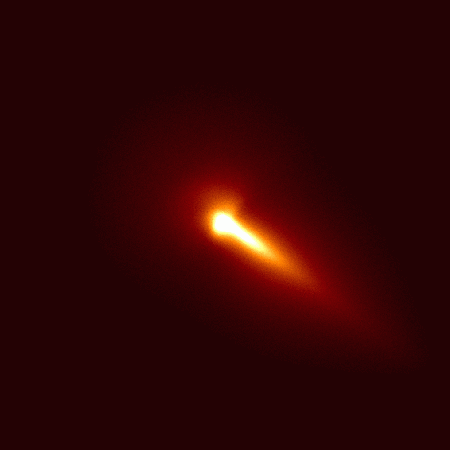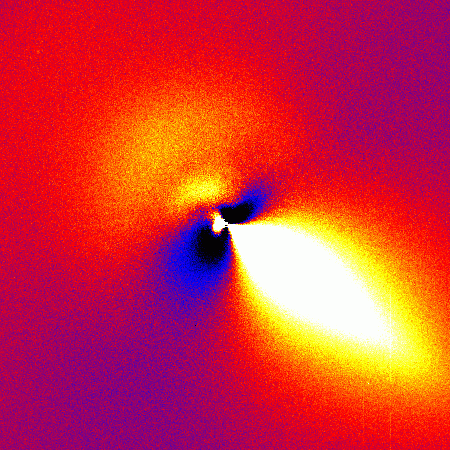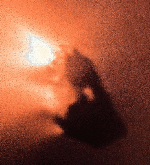 Hyakutake raw image |
 Hyakutake high-pass filtered |
|---|
| Mantles on Cometary Nuclei |
|---|
 Hyakutake raw image |
 Hyakutake high-pass filtered |
|---|
Anisotropies in the Coma
Above left is a CCD image of the inner coma of near-Earth comet Hyakutake, taken 1996 March 23 by D. Jewitt and former graduate student J. Chen. We used the University of Hawaii 2.2-m telescope equipped with a CCD camera having 2048 x 2048 pixels. The region of the comet shown is the central 220x220 arcsec, corresponding to 19,000x19,000 km.
In this first image a tailward spike is evident, as are faint asymmetries in the coma surrounding the nucleus.
The second image shows the same CCD data as the first, but now more heavily processed to enhance coma structures. In addition to the tailward spike, several jets are apparent. The arcuate intensity minimum in the upper left (north-east) coma appears to be real, and may separate two discrete jets that overlap in the plane of the sky. The color coding is from darkest = black through blue, red and yellow to brightest = white.
The existence of jets in this comet suggests that outgassing is confined to active areas on the nucleus, rather than global in nature. Thus, the jets indicate that, like the nuclei of previously studied short-period comets, the nucleus of Hyakutake (B2) is mantled by involatile material, with only a few active patches of exposed ice. Presumably, this mantle is composed of debris too large to be ejected from the nucleus by the drag of sublimated gases (a rubble mantle). Simultaneous observations from the JCMT have recorded thermal emission from escaping millimeter-sized particles in the near-nucleus coma.
Last updated August 2009 by David Jewitt

| ||
| Nucleus | Comet | Jewitt |
|---|